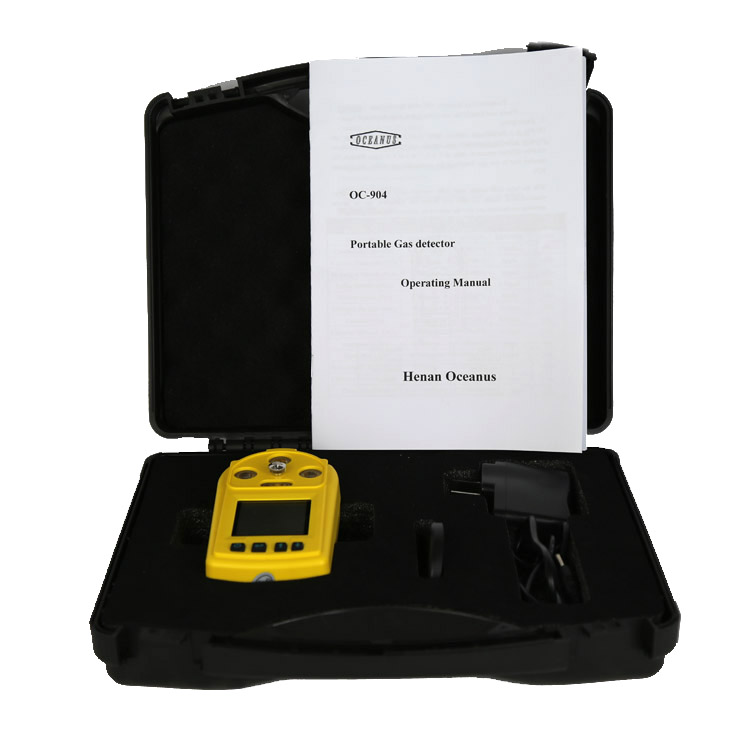How Oceanus Gas Detectors Work
Measure and indicate the concentration of certain gases in an air via different technologies. Typically employed to prevent toxic exposure and fire, gas detectors are often battery operated devices used for safety purposes. They are manufactured as portable or stationary (fixed) units and work by signifying high levels of gases through a series of audible or visible indicators, such as alarms, lights or a combination of signals. While many of the older, standard gas detector units were originally fabricated to detect one gas, modern multifunctional or multi-gas devices are capable of detecting several gases at once. Some detectors may be utilized as individual units to monitor small workspace areas, or units can be combined or linked together to create a protection system.
As detectors measure a specified gas concentration, the sensor response serves as the reference point or scale. When the sensors response surpasses a certain pre-set level, an alarm will activate to warn the user. There are various types of detectors available and the majority serves the same function: to monitor and warn of a dangerous gas level. However, when considering what type of detector to install, it is helpful to consider the different sensor technologies.
Gas Detector Technologies
Gas detectors are categorized by the type of gas they detect: combustible or toxic. Within this broad categorization, they are further defined by the technology they use: catalytic and infrared sensors detect combustible gases and electrochemical and metal oxide semiconductor technologies generally detect toxic gases
Measurement of Toxic Gases
Electrochemical sensors or cells are most commonly used in the detection of toxic gases like carbon monoxide, chlorine and nitrogen oxides. They function via electrodes signals when a gas is detected. Generally, these types of detectors are highly sensitive and give off warning signals via electrical currents. Various manufacturers produce these detectors with a digital display.
Metal Oxide Semiconductors, or MOS, are also used for detecting toxic gases (commonly carbon monoxide) and work via a gas sensitive film that is composed of tin or tungsten oxides. The sensitive film reacts with gases, triggering the device when toxic levels are present. Generally, metal oxide sensors are considered efficient due their ability to operate in low-humidity ranges. In addition, they are able to detect a range of gases, including combustibles.
Measurement of Combustible Gases
Catalytic sensors represent a large number of gas detector devices that are manufactured today. This technology is used to detect combustible gases such as hydrocarbon, and works via catalytic oxidation. The sensors of this type of detector are typically constructed from a platinum treated wire coil. As a combustible gas comes into contact with the catalytic surface, it is oxidized and the wiring resistance is changed by heat that is released. A bridge circuit is typically used to indicate the resistance change.
Infrared sensors or IR detectors work via a system of transmitters and receivers to detect combustible gases, specifically hydrocarbon vapors. Typically, the transmitters are light sources and receivers are light detectors. If a gas is present in the optical path, it will interfere with the power of the light transmission between the transmitter and receiver. The altered state of light determines if and what type of gas is present.
Common Gas Detector Applications
Although detectors are an essential application for home and commercial safety, they are also employed in numerous industrial industries. Gas detectors are used in welding shops to detect combustibles and toxics and in nuclear plants, to detect combustibles. They are also commonly used to detect hazardous vapors in wastewater treatment plants.
Gas detectors are very efficient in confined spaces where there is no continuous employee occupancy. Such spaces include tanks, pits, vessels and storage bins. Detectors may also be placed at a site to detect toxins prior to occupant entry.
Additional Gas Detector Information:
Although gas detectors are generally a reliable technology, with some models capable of lasting up to five years, their proper function is generally dependent on user maintenance, battery inspection and calibration. Calibration is a safety procedure executed to ensure that detectors are measuring the correct level of gas. In addition, the life-span of gas detectors also often depends on the amount of gas vapors to which they are exposed. Contaminated sensors may not register dangerous gas levels, which is why frequent calibration is essential.

- Pre:For World Environment Day, we have beneficial program for yo 2019/5/30
- Next:New portable gas detector with inner pump 2016/4/11




